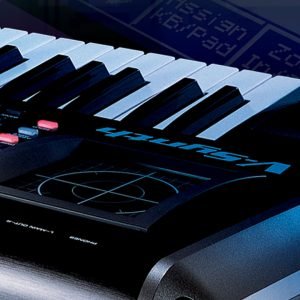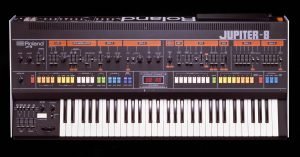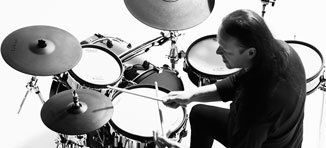Everything you need to know about Roland’s Virtual Tone Wheel technology to recreate the classic sound of the tone wheel organ.
The classic tone wheel organ was developed over 70 years ago. Its sound is still an important and popular flavour in all styles of music today. The original tone wheel organs use a series of mechanical tone wheels to generate sine waves that are the organ’s basic sound element. The tone wheels are physical spinning discs that rotate in front of something similar to a guitar pickup. Each tone wheel creates a sound close to that of a vibrating tuning fork.
Different low to high frequencies of the sine wave are produced depending on the size of the tone wheel, its distance from the pickup and the speed that the tone wheel is spinning. The original, classic tone wheel organs use many tone wheels to generate different intervals of these frequencies. These intervals are grouped into nine sets and controlled by the tone wheel organ’s essential drawbar controls.
What are drawbars?

The different parts of the nine frequency groups are “mixed” by sliding in and out the drawbars mounted above the organ’s keyboard. This is similar to the similar to the faders on a mixing console. When you pull out a drawbar, you make the volume louder for its assigned “harmonic element” of the waveform. When you push the draw bar in, the part of the waveform assigned to that drawbar decreases in volume.
Playing a tone wheel organ requires more than just playing the notes on the keyboard. Tone wheel players change the tone of the organ sound in real time by changing the drawbar settings for almost infinite possibilities of tone.
What are the other elements of a tone wheel organ?
Significantly, there’s the organ’s vibrato, chorus and percussion sounds. There’s also the changing speed of a rotating speaker cabinet that is often used to amplify a tone wheel organ, for different kinds of effects. VTW keys come with a COSM rotary model that simulates the sound of a well-known rotary speaker. Also important is the construction of its tube amp circuits, actual speaker cabinet characteristics and natural ambience. Also common with classic tone wheel organs, is the ability for players to create overdrive effects. This is done by pushing the output of the rotating speaker. This adds distortion or “growl,” as it is known, to the sound.
Roland’s Virtual Tone Wheel Modelling sound engine lets you recreate all of these classic tone wheel organ effects. Remarkably, with the same character and sound as the original classics.
One other important aspect of a tone wheel organ are the keys themselves. There are many signature playing styles that are identified with the tone wheel organ, made possible by their “waterfall” keys. The waterfall keys, which are also found on the VR-730, let players replicate playing techniques. Examples include palm glissandos, rapid repetition of a single note, tremolo between two notes and very percussive comping.
How to recreate a true tone wheel organ experience.

The tone wheel organ is a very organic instrument. The tone is shaped by the combination of its drawbar registrations, effects and playing style on the waterfall keyboard. There are many modern, digital versions of the tone wheel organ. Instruments that claim that they recreate a tone wheel organ, while lacking essential drawbars and waterfall keys, are not holding to the classic tone wheel organ legacy. As a result, they don’t benefit the musician who desires the true tone wheel organ experience. Instruments that have Roland’s Virtual Tone Wheel Modelling include all the classic elements of a tone wheel organ so musicians don’t have to compromise sound or playing experience.
Classic tone wheel organs can be very big, bulky, and expensive instruments. Add the addition of a rotary speaker cabinet and pedalboard and you have a roadie’s worst nightmare. Keys with VTW are neither big or bulky, nor expensive, and are full of additional features to make them must-have keyboards.








